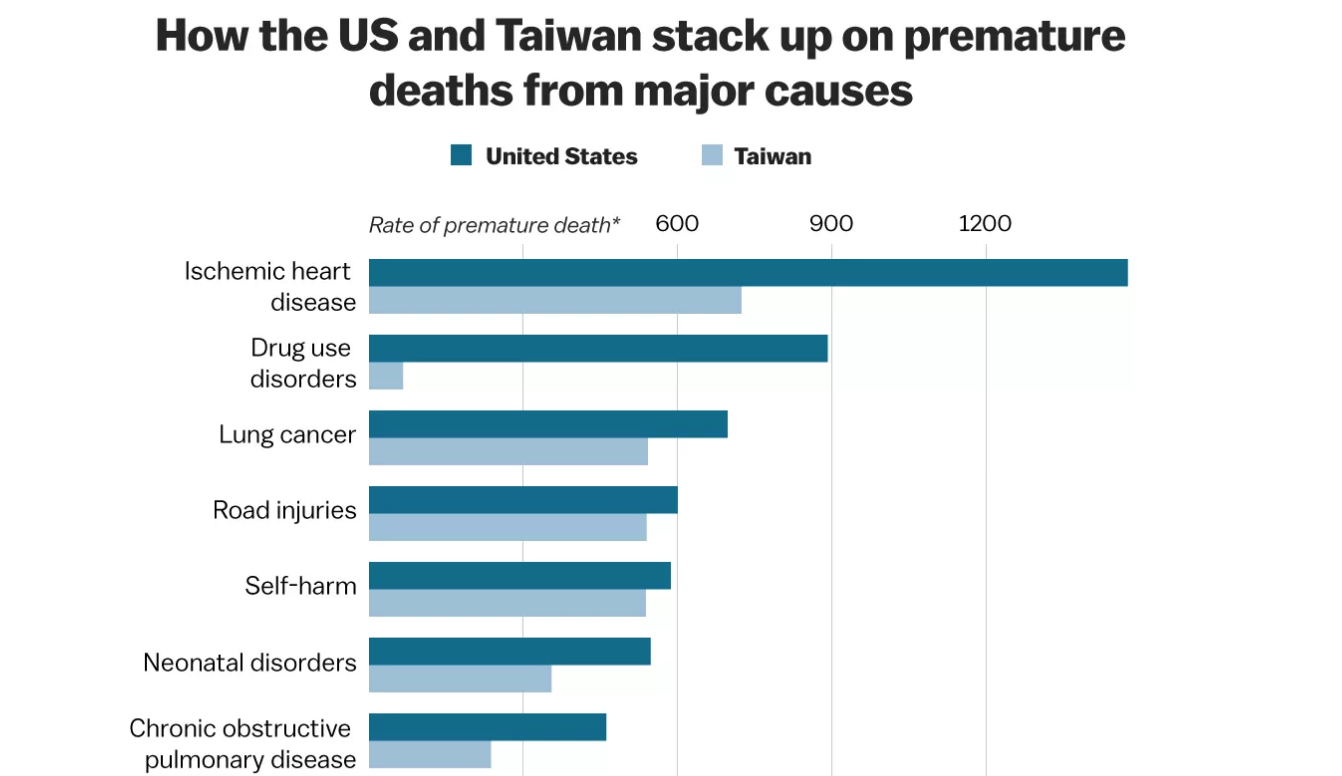In Taiwan, whether you suffer from diabetes, alcoholism or heart disease, you can always get the health care you need. Health care is a right. And, under Taiwan’s single payer, universal health care system, health care is affordable, with few if any costs to patients. Dylan Scott reports for Vox on Medicare for All–single-payer by another name–in Taiwan.
Taiwan’s single-payer system is relatively new. Less than 30 years ago, Taiwan’s health care system looked a lot more like the US system, fragmented and inequitable. In the 1980s, about four in ten Taiwanese had no health insurance.
Today, about ten percent of Americans lack health insurance. Yet, tens of millions of Americans lack adequate coverage, meaning they are underinsured, unable to pay for needed care even with coverage.
When asked how to reform Taiwan’s health care system back in the 1980’s, Princeton economist Uwe Reinhardt’s answer was Medicare for all, a single unified national system that would be equitable and cost-effective. Notably, many Taiwanese opposed the idea and did not think it could work. There were protests, and more than half of the Taiwanese said they did not want a single-payer system. But, it was enacted.
Then, single-payer took root. Taiwan’s single-payer system covers all medically reasonable and necessary care, including prescription drugs and Chinese medicine (but not long-term care), and it’s simple and easy to use. Relying on a sophisticated database to process claims, the government spends only one percent of its health care budget on administration. The government negotiates rates with providers and further contains costs through global budgets.
In stark contrast, corporate health insurers in the US spend 12 percent of their revenue on administration. And, administrative costs account for 25 percent of hospitals’ budgets. The US also does not negotiate provider rates for all Americans or rely on global budgets to contain costs.
In Taiwan, the government can monitor the health care system for inappropriate care and drive system improvements. Patients’ medical records are all on one system. Taiwan uses a national electronic health records database. In the US, there are scores of different electronic health records systems and a lot of them are proprietary and not open to public access. It’s generally very difficult to know what’s working and not working in our health care system.
Single-payer has worked quite well in Taiwan for the last 25 years. More than eight in ten Taiwanese currently support its single-payer system. Their health insurance premium payments take the form of payroll contributions (5.17 percent of income) from them and their employers, just as ours do with Medicare and Social Security.
Progressive income taxes and additional taxes on lottery tickets and tobacco also help fund the Taiwanese health care system. And, the Taiwanese government imposes a copay of about $12 whenever people use the medical system, unless they are low-income. Taiwanese with greater incomes can buy private insurance to pay for services their public system does not pay for.
The Taiwanese find their system easy to use. On average, they have more than 12 medical visits a year and wait times are relatively short. But, there are not enough doctors.
Taiwan’s health care system has its challenges for patients, doctors and residents alike. People see costs rising, albeit at a far slower rate than in the US. Some patients don’t have access to the newest medical services. And, some doctors feel overworked.
With health care costs growing, Taiwan is concerned about how to keep its system sustainable. Still, the country only spends six percent of GDP on health care, as compared to 17.7 percent in the US. And, the Taiwanese system works much better than in the US, where it’s far more common for people to go without care and die prematurely. In Taiwan, everyone is covered, health care outcomes are far better, with longer life expectancies and better health care quality, and costs are lower than in the US.
Before the US can move forward with a system like Taiwan’s, policymakers need to agree that health care is a social good, like Social Security, public education and public safety. Taiwan reached that consensus in the 1990s. We’ve made some headway with passage of the Affordable Care Act, but we still have a ways to go.
Here’s more from Just Care:
- To save money on your care, consider using a free health clinic
- Health insurers in Germany help prevent opioid crisis
- Seven reasons commercial insurance cannot meet our health care needs
- Beware of chain nursing homes
- To save money on drugs, avoid chain pharmacies

Leave a Reply